Latest News
Kitchen Chat and more…
Kitchen Chat and more…
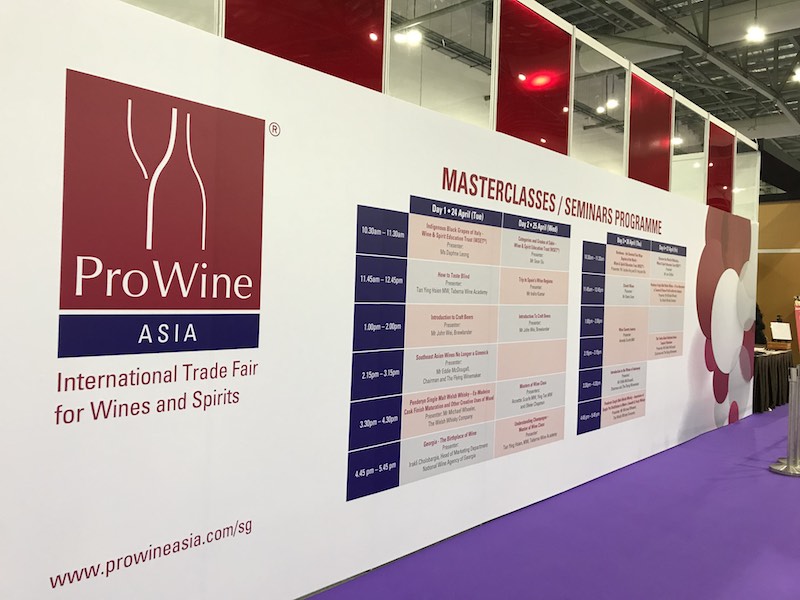
The exciting. bi-yearly Food and Hotel Asia 2018 (FHA2018) and ProWine Asia 2018 (PWA2018) flashed past us last week. Held from Tuesday, 24 May to Friday 27 May 2018 at two locations – Singapore Expo and Suntec City, the event closed as a great success! Many exhibitors are going home happy with lots of information to digest while visitors to the event are now aware of the fantastic offers that the exhibitors can offer.
We were invited to both shows as part of the Press and enjoyed our time spent there. While there were some hiccups, such as not getting updated information on where to collect our passes and messing up the timing for specific interviews with esteemed guests, the rest of our time went well.
Geek Flora and Choc started our first day with a masterclass with Penderyn Distillery’s ambassador, Michael Wheeler in the afternoon.
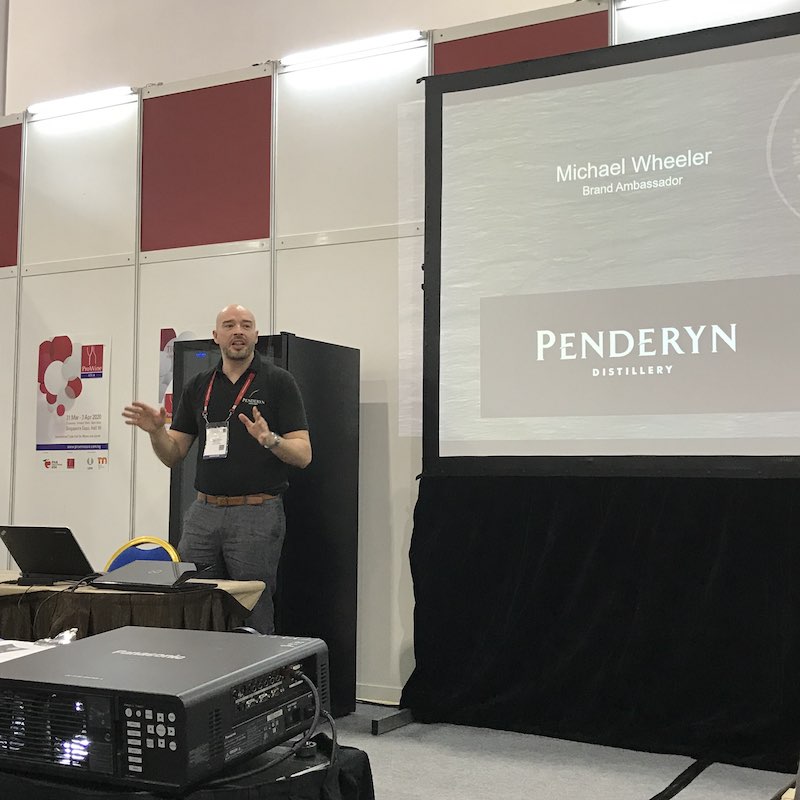
Michael Wheeler – Brand Ambassador of Penderyn Distillery
Mike (as he calls himself) led us in the exploration of how casks will influence whisky during maturation. It was informational because Penderyn uses a different distillation method and a handful of different casks.
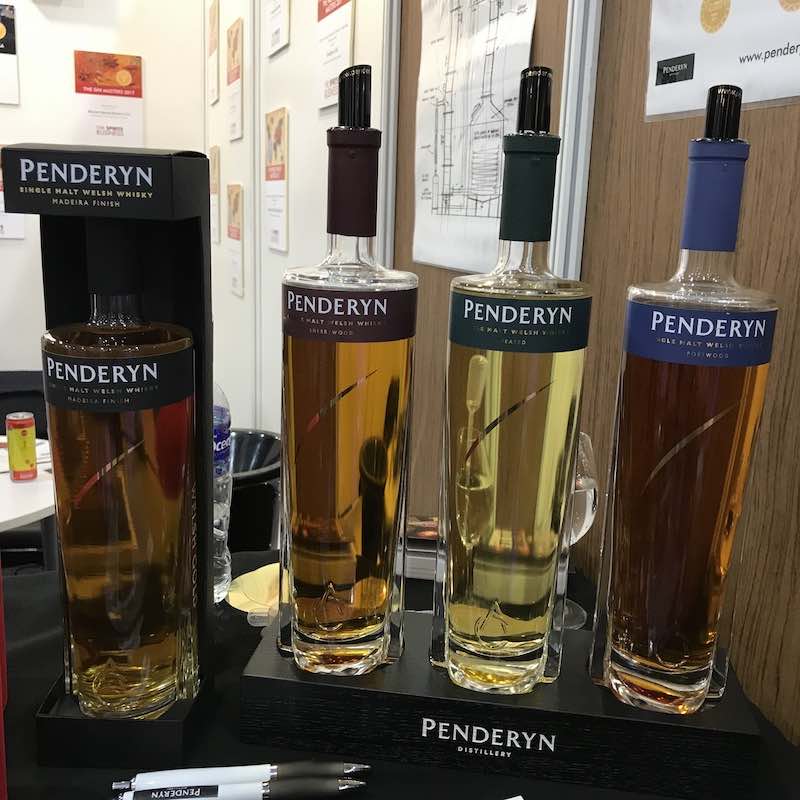
Penderyn Range (left to right) – Madeira, Sherrywood, Peated, Portwood
Their house style is ex-bourbon (using Buffalo Trace’s bourbon casks) before finishing in Madeira barriques. There are also sherry, port and peated expressions. After the masterclass, we head over to the Penderyn booth, where Mike and Dr Bianchi treated us to more excellent drams from the distillery.
There are two core ranges of whiskies from Penderyn Distillery, as well as cask strengths and their Iconic series. You can find out more about the whiskies here. If you must know, we think that the Sherrywood is quite similar to a cross between the Glendronach and the Macallan while the Portwood is comparable to Balvenie 12 Years Old.
Geek Flora went back alone on Thursday. This time, she took time to explore Hall 7 to Hall 10 of Singapore Expo. Starting from Hall 7, she made her way around the exhibits to check out almost every one of the exhibitors there.
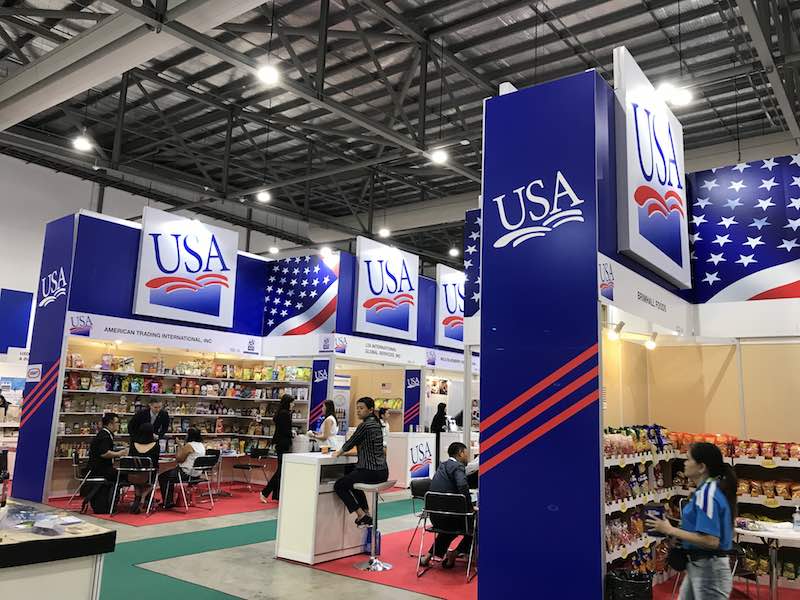
The entrance of Hall 7
The USA had an impressive number of booths at Hall 7, which prompted Flora to walk through the aisles. She struck gold very quickly there. Here’s her gold – American Bourbon and Rye from Golden, Colorado, United States.
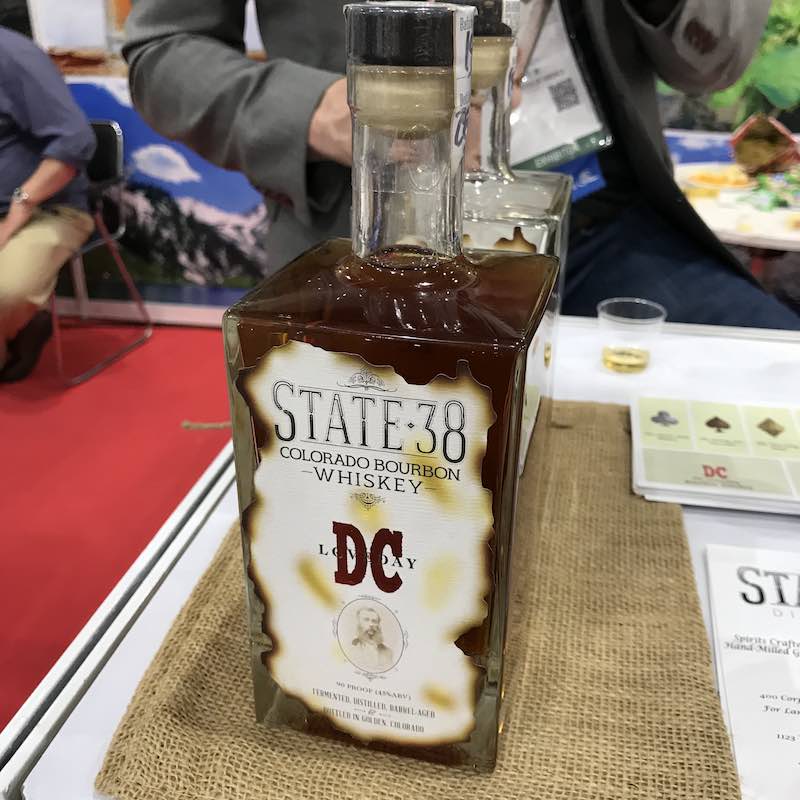
State 38 Bourbon
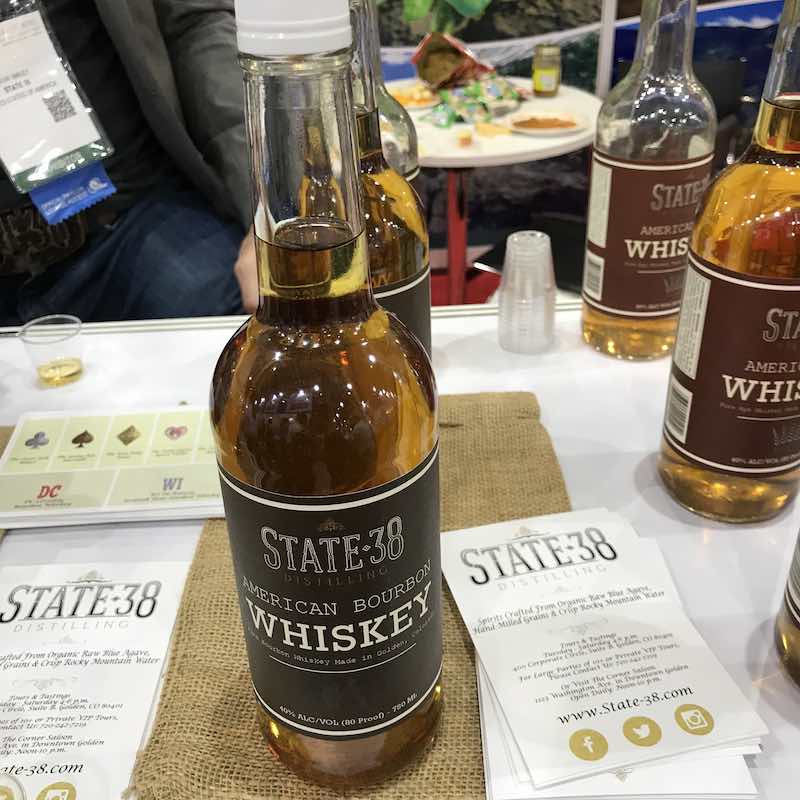
Bourbon

Rye
Flora did not pass up the chance to try some bourbon and rye, and so, she got into action very quickly. The bourbon is made up of 60% corn, 10% rye, 10% wheat and 10% of heavily malted barley (read: charred). The result is a creamy bourbon with roasted coffee notes and dark chocolates. The rye is made up of 100% rye and boasts of sweet notes and slight dryness. It is not spicy, which makes it extra pleasant to drink. Both whiskies are perfect for chilling!
Just when Flora thought it was over, the exhibitor, Sean, brought something out from under the booth. The picture is below. Grasp! Impeach Vodka! Now, this is no ordinary vodka. The peach infusion is excellent, and it is quite possibly, the BEST flavoured vodka that Flora has ever tasted! There is also a story to the label. Study it carefully, and let Flora know what you think.
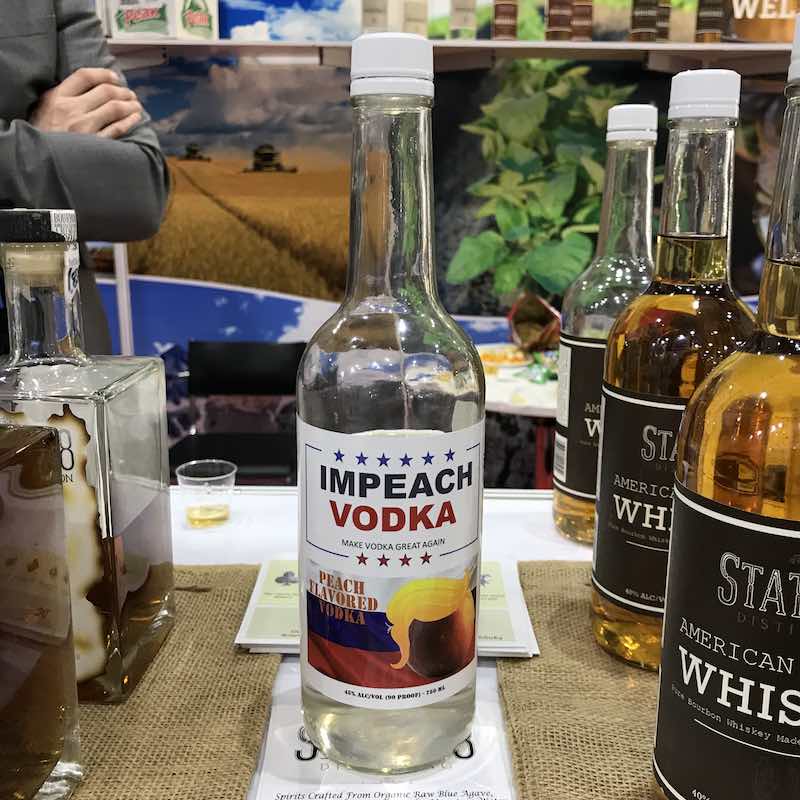
Impeach Vodka
After the exciting discovery, Flora continued her walk and saw many amazing sights. She got excited when she saw the below, but alas, it was Scottish mutton and beef – not whisky! 🙁
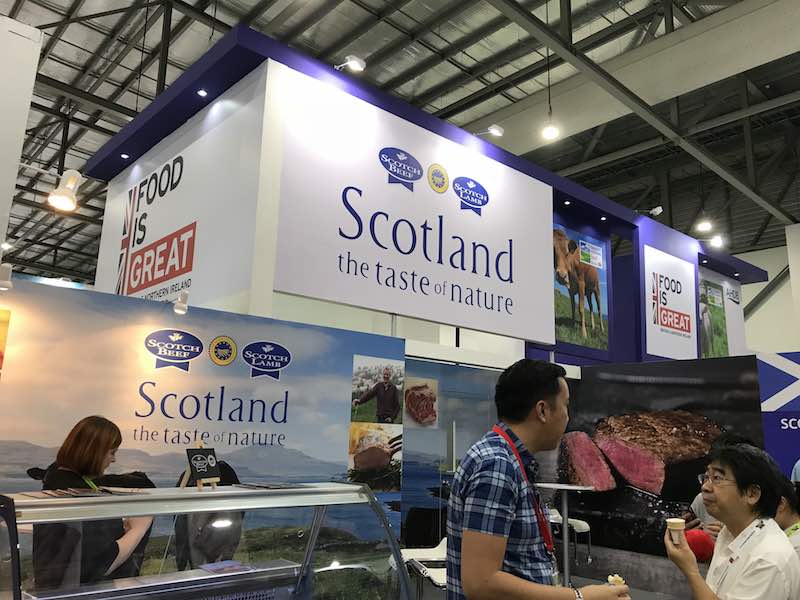
The next booth to get Flora excited was Instadrinks, an online retailer in Singapore with their boss based in Dubai. She got to work again, trying out their spirits.
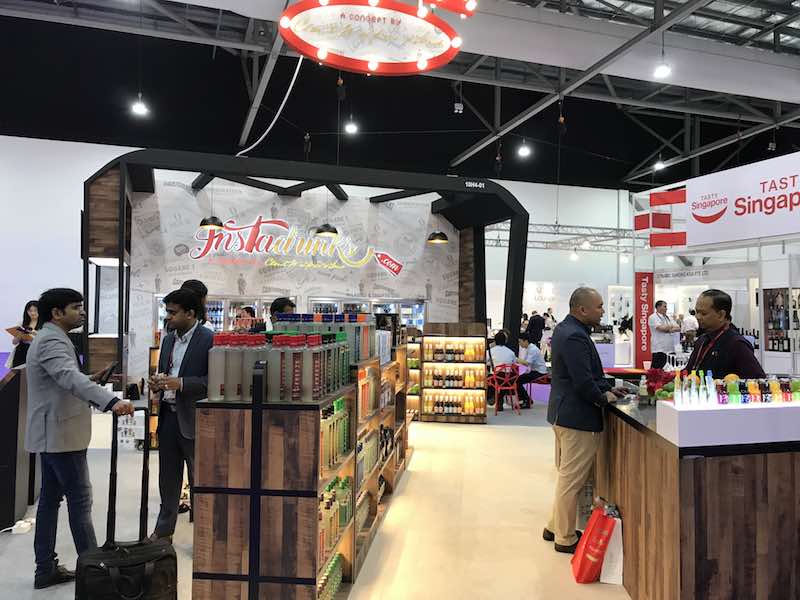
Instadrinks
There are Indian blended whiskies and a Scotch grain whisky, but what impressed Flora was neither. An Indian brandy (VSOP) named Leopold II and a London Dry Gin infused with Lavender, named Old Cock Gin caught her attention instead.
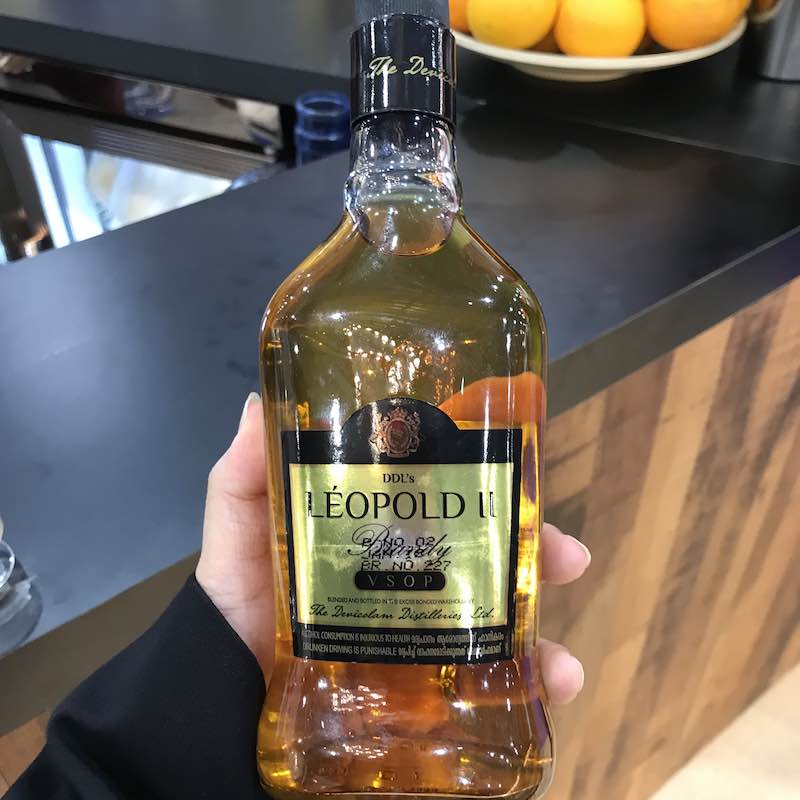
Leopold II
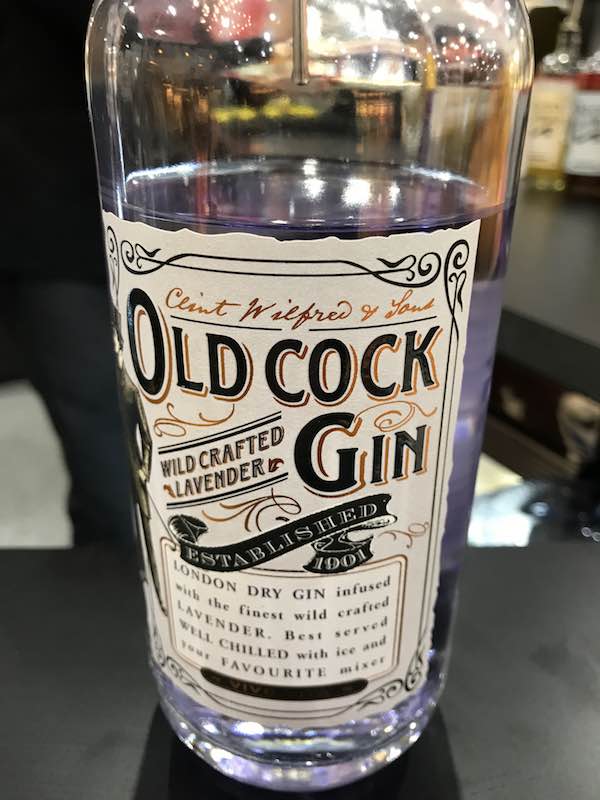
Old Cock Gin
Just for the records, Flora wasn’t impressed with the name, but the LIQUID. The G&T that the bartender did for Flora with this particular London dry gin was fantastic!
Flora did more tastings after this, but they are mostly gins and vodka instead of whisky.
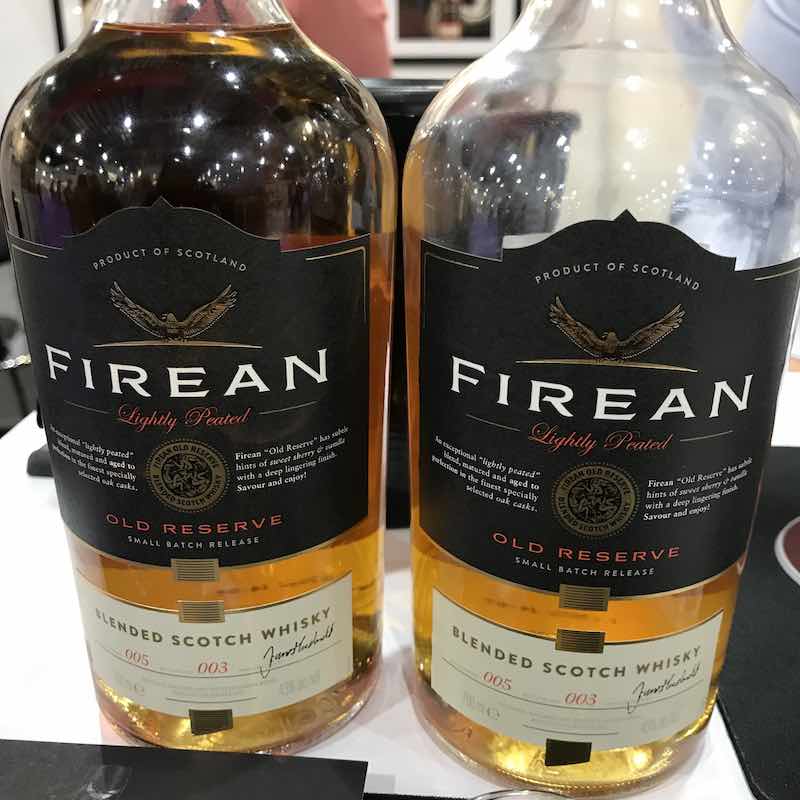
Firean Blended Scotch – Peated
Firean is a peated blended Scotch. Unique on its own, both Flora and Choc agreed that it was a fantastic drink on its own, on the rocks or in a cocktail (Choc tried this on Friday). It is balanced and approachable, so someone who is just going into peated whisky would like it.
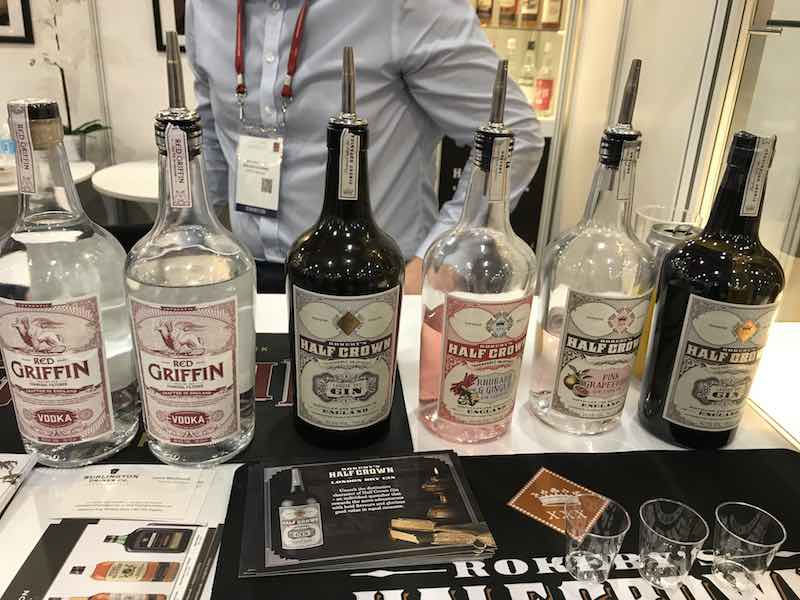
Griffin Vodka and Half Crown Gin
The Griffin vodka is charcoal-filtered, so you can imagine just how easy and smooth it is. The liquid is elegant and soothes the throat with its oily and creamy mouthfeel. The Half Crown gins are one of the impressive spirits at this booth. The original gin has a heavy juniper taste, and the botanicals are fragrant. The Pink Grapefruit has a sweeter taste with the grapefruit flavours showing up early in the nose and palate. The Rhubarb and Ginger was a huge favourite for Flora. The sweet and slightly spicy taste of the gin infused amazingly well with the botanicals in the gin, making the nose and palate exceptionally well balanced.
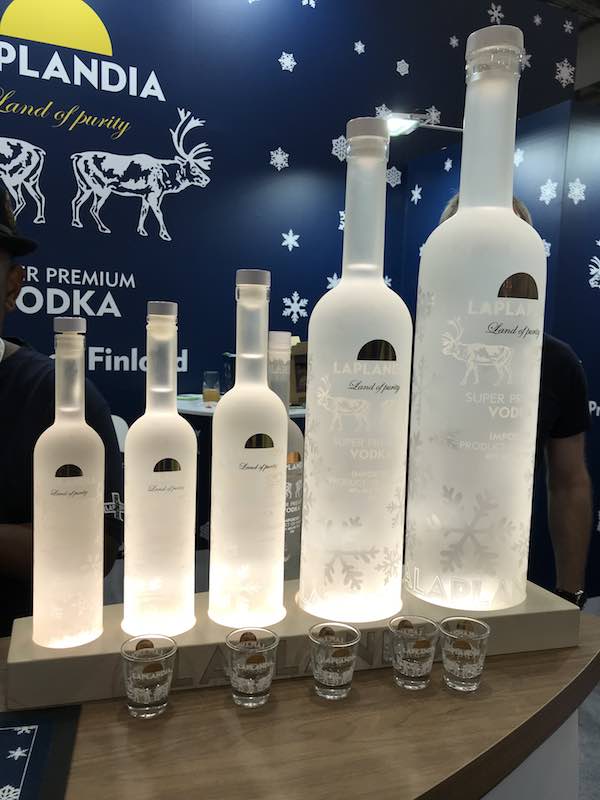
Lapland Vodka
Ever heard of Lapland vodka? Made with spring water all the way from Finland, you can find this vodka here in Singapore! Lapland vodka is a dangerous drink for the young ones though – it is strong and yet so easy to drink. Flora thinks that it is almost like drinking fresh spring water! If you prefer some flavoured vodka, check out the below picture. Flora’s favourite is the Espresso flavour. Chill the vodka, pour it in a glass, add cold chocolate milk, and you can have it for supper! It was excellent!
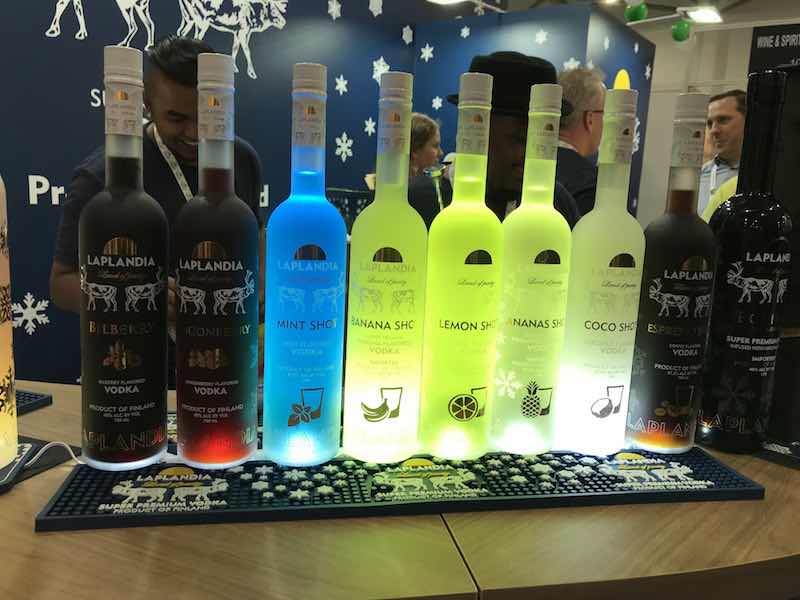
Lapland Flavoured Vodka
Flora managed to finish up Hall 6 before calling it a day. It was incredibly tiring to walk the halls, and with all the drinks she had, she was getting sleepy too.
Flora started Friday early at 10.30 am with a Masterclass by Wine and Spirit Education Trust (WSET). It was an introductory session to the world of whisk(e)y hosted by Lam Chi Mun, the Director at Diageo Bar Academy. Flora was glad to meet Chi Mun and have a chat with him. She also had a great time drinking some excellent whiskies from Diageo.
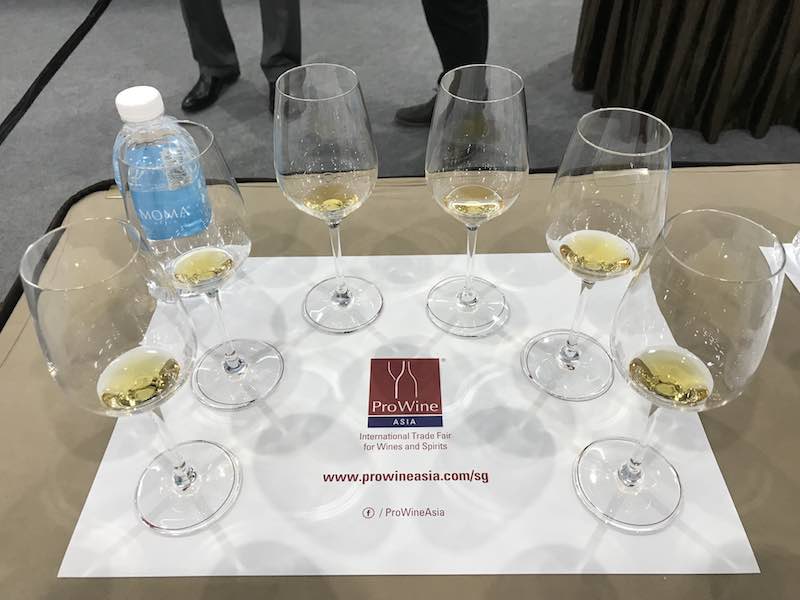
From Left: Oban 14, Singleton of Glen Ord 12, Johnnie Walker Blender Batch Bourbon, Bulleit Rye, Talisker 10 and Lagavulin 16.
If you do not know what WSET does, it is a wine and spirits school based in the U.K. They partner schools globally to provide proper and stringent education for the alcohol industry professionals so that we can all learn from the professionals in the bars. You can read more about them here.
Flora did not find any more whiskies or spirits for the rest of the day. She walked around the remaining halls, sampled lots of food, and drank some Taiwan beers. When Choc showed up in the afternoon, they tasted more food, before finally visiting the various booths one last time to wish the exhibitors well on their flights back home.
It was a meaningful three days at FHA2018 & PWA2018, and we are grateful for the opportunity to be part of it. We hope to visit FHA2020 again as Press, and hopefully, there will be even more whisky/whiskey exhibitors then!
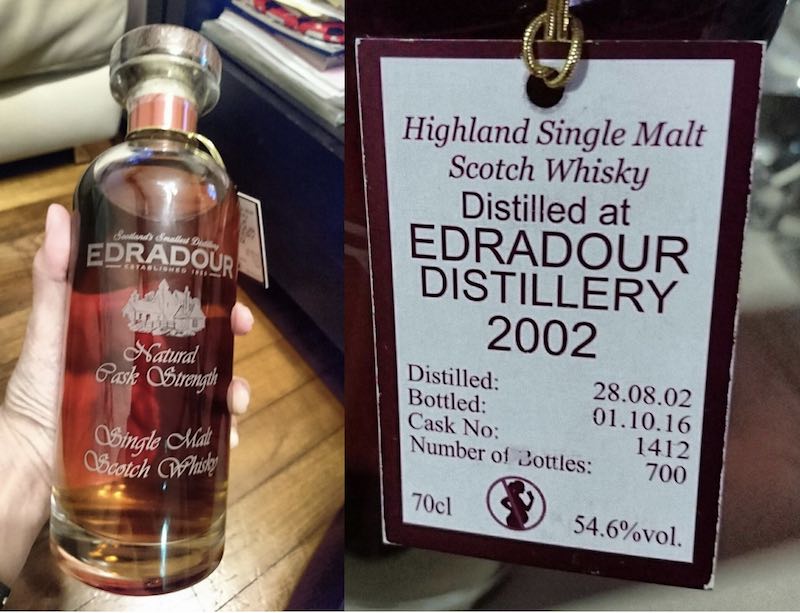
Picture of Bottle and Cask details – Courtesy of a friend
Edradour is a fascinating distillery as we have discovered in an earlier post. A friend had given me a pretty sample of an Edradour single cask some time ago, so I think this is the best time for me to drink and post some tasting notes. It is my first whisky from Edradour, and I am excited to get going!
So here are the details of the single cask.
Edradour 2002 13 Years Old
Distilled: 28/08/2002
Bottled: 01/10/2016
Cask No: 1412
Outturn: 700 bottles
Note: The liquid is 13 years old as stipulated by the regulations of SWA – the bottled date does not add up to 14 years in total.
Colour: Dark Gold
ABV: 54.6%
Nose: Caramel and peppery spice surface almost immediately with some dark, ripe fruits in the background. After aeration of five minutes, intense dark chocolate notes triumph over the caramel and push the spice into the background. There are hints of raisins and cherries floating around, but the dark chocolate notes overwhelm the other notes most of the time. (16/20)
Palate: There is an initial bite of the spice, and then caramel leads the way in the mouth, with dark chocolate and raisins coming soon after. Warm peppery spice reappears in the back, coating the back of the mouth and the throat pleasantly. The mouthfeel is oily and creamy with faints hints of oak at the tail end of the palate. (17/20)
Finish: Long finish with an increase in oakiness from the palate. The sweetness of the raisins follows closely, and the creaminess of the whisky coats the mouth thoroughly. Some caramel notes appear shortly and linger long into the end of the finish. (17/20)
Body: It is a balanced dram with a sherried profile. Approachable and easy to drink, even at 54.6% abv, this single cask Edradour is an ideal whisky to introduce to drinkers who are exploring higher abv drams. (33/40)
Score: 83/100
Geek Flora: This is not a bad whisky; in fact, I like it for its balance and the gentle sherry notes. However, it is slightly one-dimensional and not as challenging as expected. Mellow and approachable, I think this is perfect for whisky drinkers who are starting out on their journeys for a higher abv dram.
Geek Choc: This is a typical sherry whisky but not a sherry bomb. The dark chocolate notes are memorable though. It is too easy to drink at 54.6%. The price point is another contender for the lower score. While it is not an expensive bottle, it is not the price of a “daily dram” too. Nonetheless, it is a lovely whisky that I enjoyed!
This sample is part of the last drops in the bottle. It might not be the exact reflection of the whisky but should be close enough. The bottle is probably opened for about 3-4 months.
Did you know that the smallest distillery in Scotland – Edradour – is near the original Lindores Abbey? Friar John Corr of Lindores Abbey paid duty for eight bolts of malt to make aqua vitae for King James IV in 1494. That is the oldest record of whisky, or aqua vitae, to date. In 1644, when Scotland increased higher duty on alcohol through the introduction of the Scottish Excise Act, Edradour operated illegally as one of the many of the other illicit stills around Scotland.
The official records of Edradour started in 1825. Before that, we need to look at the history of whisky in Scotland. By 1823, the government of Scotland introduced the Excise Act which encouraged legal ownership through a reduction of duty paid on spirits. Because of the 1823 Excise Act, many distilleries took out licenses and began their history as official distilleries. Edradour is not different. In 1825, Edradour took its license and became a legal distillery through a local farmer cooperative. Alexander Forbes was the license holder. The farmers named the distillery Glenforres.
By 1834, the farmer cooperative wrote to the Duke of Atholl to request for new buildings for the distillery. As a result of the request, two of the representatives, James Scott and Duncan Stewart, became the official tenants of the distillery in 1837. They also renamed the distillery, Edradour, which means “the land between two rivers”.
As the distillery progressed, the farmers decided to start a formal cooperative. In 1841, John McGlashan and Co formed with eight members – Alexander Forbes, Duncan Stewart, James Scott, James Robertson, Alexander Stewart and William McIntosh. However, misfortune befell the cooperative and in 1853, James Reid, another local farmer, took over the distillery as James Reid and Company. Edradour struggled under James’ leadership and in 1884, the ownership of the distillery transferred to John McIntosh, the son of William McIntosh.
Under John McIntosh’s leadership, the distillery began to grow. He rebuilt the distillery and rebranded the whisky. The rebuilding was a success and the distillery flourished. We can even see a surviving plan of the interior of the still house and the tun room today at Edradour.
As Edradour gained popularity, Alfred Barnard visited the distillery. Alfred Barnard, as you already know, wrote the most important book on whisky – The Whisky Distilleries of the United Kingdom – in 1887. In the book, Barnard waxed lyrical about Edradour and described the distillery as “a few ancient buildings not unlike a farmstead”.
By 1907, the flourishing distillery saw the addition of one more person – Peter McIntosh, the nephew of John. Peter continued the McIntosh lineage at Edradour. However, as the years passed, Edradour needed a new partner to expand yet again. In 1911, Edradour took in John Stewart, a wine and spirit merchant as a partner to increase their scope and distribution. The distillery functioned through the First World War and emerged largely unscattered.
In 1933, William Whiteley purchased Edradour. Before the purchase, Whiteley bought the Edradour whisky for his flagship blends, “House of Lords” and “King’s Random”. He probably got tired of buying the whisky and decided to buy the distillery instead. Haha…
Whiteley retired in 1938, and his successor was none other than Irving Haim, an agent for Frank Costello. Costello was the feared Godfather of mafia fame in New York and headed one of the five families. While nothing changed the production at the distillery, the association with the mafia appeared to give Edradour a more attractive appeal. Edradour continued to produce whisky blends “House of Lords” and King’s Random” and grew in popularity even after the Second World War.
As the world moved along, modernity appeared in Edradour. In 1947, electricity replaced the water wheel and the distillery received consistent power from then onwards. It continued to produce blends until 1976, where Haim passed on.
After Haim’s death, the distillery was sold to an American/Australian business consortium for a brief six years before getting bought over by Pernod Ricard. Nonetheless, it managed to snag the Queen’s Award in 1980. Pernod Ricard expanded the distillery by adding a new visitor centre in Edradour in 1983.
Pernod also introduced a new Edradour Single Malt – the Edradour 10 Years Old. At the same time, the King’s Random blend was discontinued. Pernod used the bulk of the spirit for their house blend (Clan Campbell) and the House of Lords while reserving some for its single malt.
Signatory Vintage Ltd bought Edradour in 2002, effectively moving it back into Scottish hands after 26 years of foreign ownership. Andrew Symington, the founder of Signatory Vintage Ltd, is also a Keeper of the Quaich. Unfortunately for Symington, a flash flood in August damaged the distillery. It was lucky that the flood narrowly missed the still house!
Rebuilding took some time, but Symington soon had the distillery up and about again.
Andrew Symington expanded the whisky portfolio of Edradour. In 2003, he started distillation of a peated version of Edradour, named Ballechin. He also started major refurbishment of the old buildings. One of the first new builds was a new Tasting Bar at the distillery in 2006. He also moved the operations of Signatory Vintage to Edradour. Symington did not want to continue the Edradour’s tradition of bottling offsite, so he built a new bottling facility at the distillery in 2007. Edradour now bottles at the source, creating more appeal to whisky drinkers around the world. The expansion continued with the opening of the Caledonia Hall (for events) and a new dunnage warehouse (to mature Edradour and Ballechin whisky onsite) in 2010.
Edradour has both peated and unpeated whiskies. The peated whisky range is Ballechin while the unpeated one is named after the distillery. The core range includes the 10-year-old and the 12-year-old single malt, as well as an 18-year-old single malt. Edradour also experiences with wine casks and released whisky matured in Port, Burgundy, Sauternes and Chardonnay casks.
We also spotted many independent bottlings of Edradour, so there is plenty to choose if you want to grab a bottle or two from Edradour distillery. We also did a review on an Edradour single cask. You can read it here.
We believe that under Andrew Symington and Signatory Vintage, Edradour can only go from glory to glory. Symington became the Master of the Quaich in 2012 and Des McCagherty, of Signatory Vintage and Edradour, became Keeper of the Quaich in 2013.
11311 Harry Hines Blvd
Dallas, TX, United States
(555) 389 976
dallas@enfold-restaurant.com
